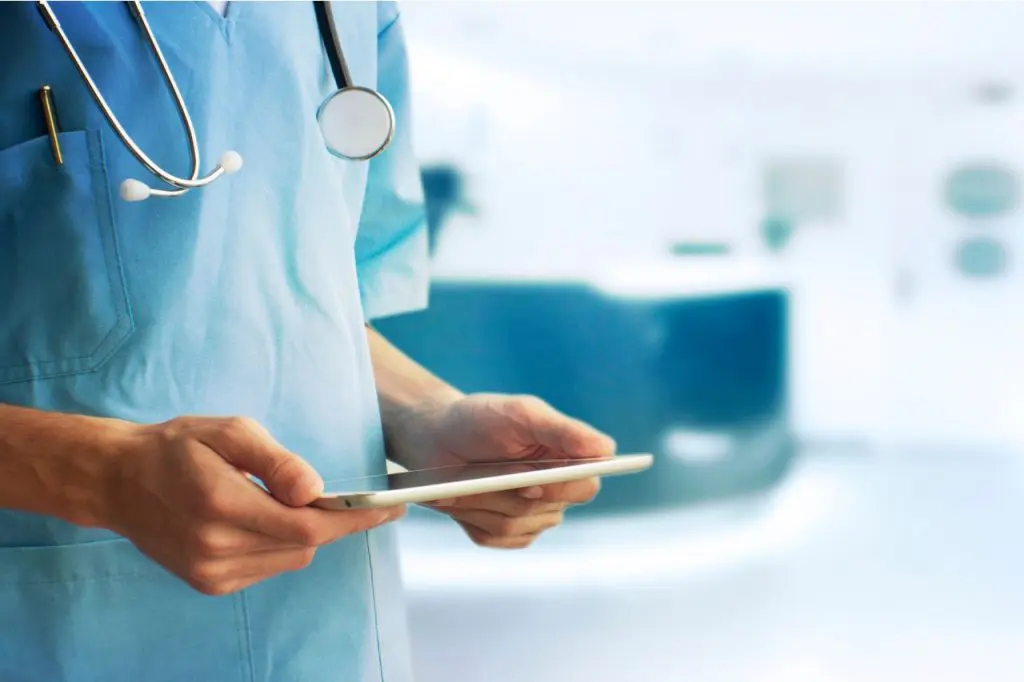The future of healthcare is poised to undergo a massive transformation in the next couple of decades. Technology is expected to play an increasingly significant role in delivering and managing care. For example, the digitization of patient intake makes it easier for physicians and clinic staff to gather information accurately via EHR and EMR systems.
As a healthcare professional, keeping up with new methods and tools in patient care is a must. This ensures the continuing efficiency and growth of your practice. In an increasingly competitive landscape, healthcare organizations that embrace technology will be best positioned to reduce their operational expenses and thrive.
Here are seven reasons why you should lean into technology and embrace these innovations.
7 Reasons Why Technology Is The Future of Healthcare
- Empower Patients With Disabilities
- Ensure Accuracy of Patient Information
- Provide Remote Access to Patient Care
- Enhance Communication and Collaboration
- Support Public Health Efforts
- Improve Healthcare Education
- Reduce Operational Costs
1. Empower Persons With Disabilities

There’s still a long way to go in terms of making the world truly accessible for everyone, but technology is beginning to level the playing field. Advancements in assistive technologies like text-to-speech software and Braille displays are making it possible for persons with disabilities to access information and communicate more easily.
In addition, new developments in medical devices and prosthetics are giving people with physical impairments greater independence.
At its core, healthcare is about empowering patients to make the best decisions for their health. For example, online portals can give patients 24/7 access to their medical records, while mobile apps can provide reminders and educational materials.
2. Ensure Accuracy of Patient Information
Technology can improve accuracy in patient care by providing access to up-to-date medical records and facilitating communication between providers. Medical records are constantly changing as information is added or updated. This can make it difficult for healthcare professionals to keep track of everything.
However, electronic health records (EHR) provide instant access to the latest information about patients. It ensures that medical professionals always have the most accurate information available, which can help them make better decisions.
Instead of having to manually input data into the system, data can be automatically entered from medical devices or other sources. This can help to reduce errors and make sure that data is entered correctly.
Another exciting development is the use of natural language processing (NLP) to automatically extract data from clinical notes. This can help save time and ensure that critical information is not missed.
3. Provide Remote Access to Patient Care
Telemedicine can provide better access to care, lower costs, and shorten wait times. It allows patients to receive care from providers who may not be physically located nearby. This can be beneficial for patients who live in rural areas or have difficulty traveling.
Telemedicine can be used for a variety of different procedures, including psychiatric consultations, virtual surgery, and the management of chronic conditions. In many cases, telemedicine is just as effective as in-person care. In certain situations, telemedicine may even be more effective. For example, patients with chronic conditions can receive more timely interventions and constant monitoring.
Augmented reality is another promising area since it allows doctors to superimpose images and information onto a patient’s body in real time. This can be used for a variety of different purposes, including diagnosis, surgery planning, and post-operative care.
4. Enhance Communication and Collaboration

A key benefit of technology in healthcare is providing practitioners with an easy way to collaborate. Thanks to the internet, doctors now have instant access to a wealth of medical knowledge.
With just a few clicks, doctors and nurses can consult with specialists from all over the world, review the latest research on a particular condition, or access patient records. This unlimited access to information has made it possible for healthcare professionals to provide better care for their patients.
Here’s another example that highlights how crucial communication technology can be. Let’s say a patient comes into the emergency room with a heart attack. The ER doctor only has minutes to consult a cardiologist to determine the best course of treatment. Instead of having to move the patient to another wing of the hospital or waiting for the specialist, the two doctors can connect via video chat.
Another example is in the area of medical research. Scientists worldwide now share their data and findings more efficiently than ever before. This allows for quicker medical therapies and treatment breakthroughs that ultimately benefit patients.
5. Support Public Health Efforts
Technology can help us better understand the factors that can impact health. For example, data mining and analytics can identify patterns and trends in health data that can help us better target interventions.
Digital platforms can connect individuals with resources and support networks. For example, social media is useful in disseminating information about public health initiatives. Social media platforms like Facebook and Twitter can be used to raise awareness about health issues, share information about disease outbreaks, and provide updates on vaccination campaigns.
In addition, social media can be used to gather data about people’s health beliefs and practices, which can help inform public health strategies.
Mobile technologies can be used to increase access to care and improve adherence to treatments. You can also use mobile apps to deliver reminders about prescription medication and routine checkups. They also allow the tracking and monitoring of fitness habits and other interventions.
6. Improve Healthcare Education
In the past, if a healthcare provider wanted to train someone on a specific procedure, they would have to be in the same room. Now, with video conferencing and other digital tools, providers can share their expertise with learners anywhere in the world.
Virtual reality has enabled providers to create immersive learning experiences that simulate real-world scenarios. Augmented reality (AR) is now being used by medical students to study anatomy, making theoretical knowledge more engaging.
This hands-on approach is much more effective than traditional lectures and textbooks. It allows medical students to gain the skills and confidence they need to provide outstanding patient care.
Finally, technology has made healthcare education more accessible than ever before. With online learning platforms and mobile apps, learners can complete their training at their own pace.
7. Reduce Operational Costs
In any business, operational expenses can make or break the bottom line. Budgets are often tight in the healthcare industry, so reducing operational expenses helps ensure financial sustainability.
One way that healthcare organizations can reduce operational expenses is by embracing technology. For example, by digitizing the patient intake process and using online forms and e-signatures, administrative staff can spend less time on paperwork and more time caring for patients. By using EHR systems, clinicians can avoid duplicating tests and save both time and money.
Technology also has a positive impact on the workflow of healthcare teams. This boost in efficiency can lead to impressive savings.
According to the current administration, the increased implementation of electronic medical records (EMR) will save the federal government $12 billion in the next 10 years. If the switch to paperless medical records continues, RAND Corporation says there will be savings of up to $80 billion per year.
Digital Transformation in Healthcare With Fill
Fill is a document management tool that works like a Swiss army knife, allowing you to electronically sign documents, send signature requests, and manage data in the cloud.
It can help revolutionize healthcare by enhancing patient data collection using customizable digital forms. Unlike paper forms, patients can sign online forms remotely and fill them out on any mobile device. They significantly reduce the amount of time required for data entry.
The best part? This cloud-based platform helps you meet HIPAA requirements for data privacy.
Try the Fill app for free and see how it can elevate your overall healthcare experience.



